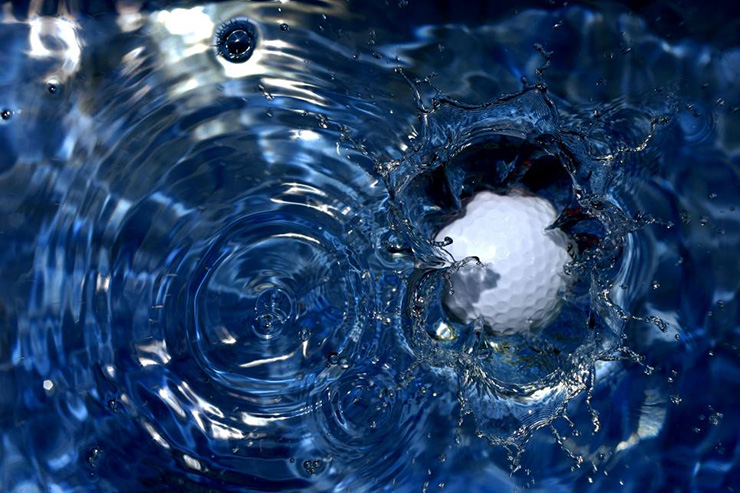It happens all the time. During a casual round, someone will dunk one in a pond marked as a penalty area. The player will then proceed to pull out another ball, declare it a provisional and play it. Clearly, the point is to save time; the intent being that the golfer can go forward and see whether the original ball really is underwater or not and keep things moving. Seems like the logical way to play, right?
Well, not really. The problem here is that hitting a provisional ball in this kind of situation is mostly prohibited according to the Rules of Golf.
If you need clarification, just ask professional golfer Gavin Hall. He was playing in the second stage of the Korn Ferry Tour’s qualifying tournament a year ago when he hit a ball in the water on the sixth hole of the Plantation Preserve Golf Club in Florida. Despite everyone in his group seeing it splash, Hall went ahead and hit another shot from the tee. Upon reaching the penalty area, Hall and his caddie found the original ball still in the penalty area but playable on a bank. The former All-American at Texas went ahead and hit the original ball, saved par and appeared to card an important 66 in the first round.
An hour later, however, his fate had changed. After talking with rules officials, Hall was disqualified for playing a wrong ball and then teeing off on the next hole without correcting the error.
Unfortunately for Hall, he unknowingly violated Rule 18.3a, which explains that hitting a provisional is not an option if a ball is known or virtually certain to be in a penalty area. The moment the player who hit that shot takes out another ball and plays it, regardless of announcing it as a provisional, the new ball is in play and the original is abandoned. Since Hall did not continue with the ball that was now officially in play, he was playing a wrong ball and thus setting himself up for the DQ.
So when is hitting a provisional ball allowed? The Rules of Golf explain that players can play a provisional when they have hit a ball out of bounds or when a ball might be lost outside a penalty area. Before hitting that provisional ball, players must announce that’s what they are doing.
To be clear, you can hit a provisional if it’s not known or virtually certain that the previous shot came to rest in a penalty area. In those cases, announce a provisional, swing away, and then go to the area where you think your original ball might be. You’ve got three minutes to find it. If you don’t find it, play the provisional, adding a penalty shot to your score.
Now here is where it can be a bit confusing, and where Hall got into trouble. If you do find you ball in the penalty area, then your provisional ball has to be abandoned and you have to proceed with playing the original or taking relief under the options in Rule 17. This includes the possibility of going back to the spot where you played the previous shot, which seems counterintuitive when you’re trying not to slow down play (you already hit a provisional from that spot). However, according to the USGA, this is because if the ball is in the penalty area, you have multiple relief options to choose from. And if you’ve hit a provisional, you’ve gotten to preview one of those options (re-hitting from the previous spot), which might shade what relief option you take.
Where a local golf course might help reduce the confusion is by implementing Model Local Rule B-3 for unusual penalty areas (size, shape, location). A scenario where that might make sense is for a penalty area where balls are often found and played. Rather than have a golfer hit a tee shot, trek out to the location and then evaluate the lie—possibly having to return to the tee to hit another shot—the local rule allows for a provisional ball to be hit to save time. So if the lie is terrible or the ball isn’t found, the provisional is now in play.
It’s always smart to check with the course/committee before you play to see if this local rule is in effect for any penalty areas.
Main image: spxChrome
RELATED: My opponent took a generous drop after hitting into a hazard. Can he be DQ’d for that?







